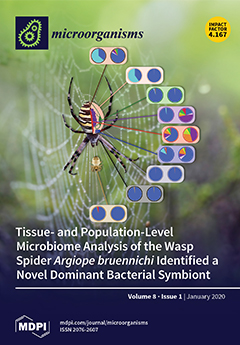The genus
Aeromonas belongs to the
Aeromonadaceae family and comprises a group of Gram-negative bacteria widely distributed in aquatic environments, with some species able to cause disease in humans, fish, and other aquatic animals. However, bacteria of this genus are isolated from many other habitats, environments, and food products. The taxonomy of this genus is complex when phenotypic identification methods are used because such methods might not correctly identify all the species. On the other hand, molecular methods have proven very reliable, such as using the sequences of concatenated housekeeping genes like
gyrB and
rpoD or comparing the genomes with the type strains using a genomic index, such as the average nucleotide identity (ANI) or
in silico DNA–DNA hybridization (
isDDH). So far, 36 species have been described in the genus
Aeromonas of which at least 19 are considered emerging pathogens to humans, causing a broad spectrum of infections. Having said that, when classifying 1852 strains that have been reported in various recent clinical cases, 95.4% were identified as only four species:
Aeromonas caviae (37.26%),
Aeromonas dhakensis (23.49%),
Aeromonas veronii (21.54%), and
Aeromonas hydrophila (13.07%). Since aeromonads were first associated with human disease, gastroenteritis, bacteremia, and wound infections have dominated. The literature shows that the pathogenic potential of
Aeromonas is considered multifactorial and the presence of several virulence factors allows these bacteria to adhere, invade, and destroy the host cells, overcoming the immune host response. Based on current information about the ecology, epidemiology, and pathogenicity of the genus
Aeromonas, we should assume that the infections these bacteria produce will remain a great health problem in the future. The ubiquitous distribution of these bacteria and the increasing elderly population, to whom these bacteria are an opportunistic pathogen, will facilitate this problem. In addition, using data from outbreak studies, it has been recognized that in cases of diarrhea, the infective dose of
Aeromonas is relatively low. These poorly known bacteria should therefore be considered similarly as enteropathogens like
Salmonella and
Campylobacter.
Full article






